CNLs Return for In-Person Learning
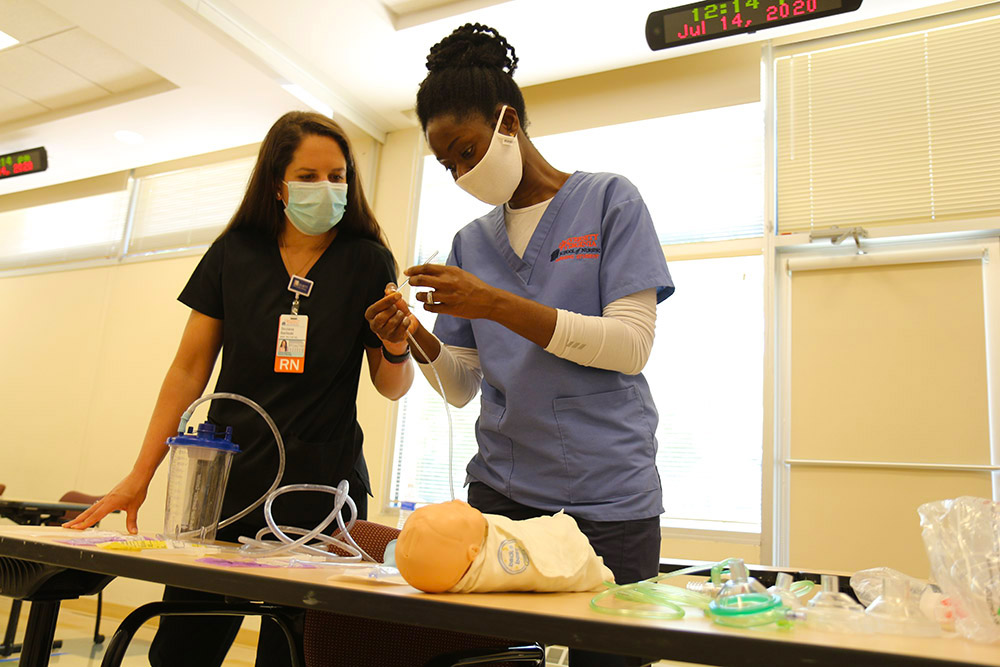
Our Clinical Simulation Learning Center sparked back to life this week, when second-year Clinical Nurse Leader students returned to McLeod Hall for in-person pediatric skills practice.
Masked, physically distanced, with surfaces repeatedly disinfected and thoroughly cleaned between scenarios, CNLs practiced communicating with young patients, both anxious and absent parents, assessing pain, and administering medications. They did simulations with patients with everything from sickle cell anemia and traumatic burns to unmanaged pain, both freshening up skills previously learned and diving into new competencies.
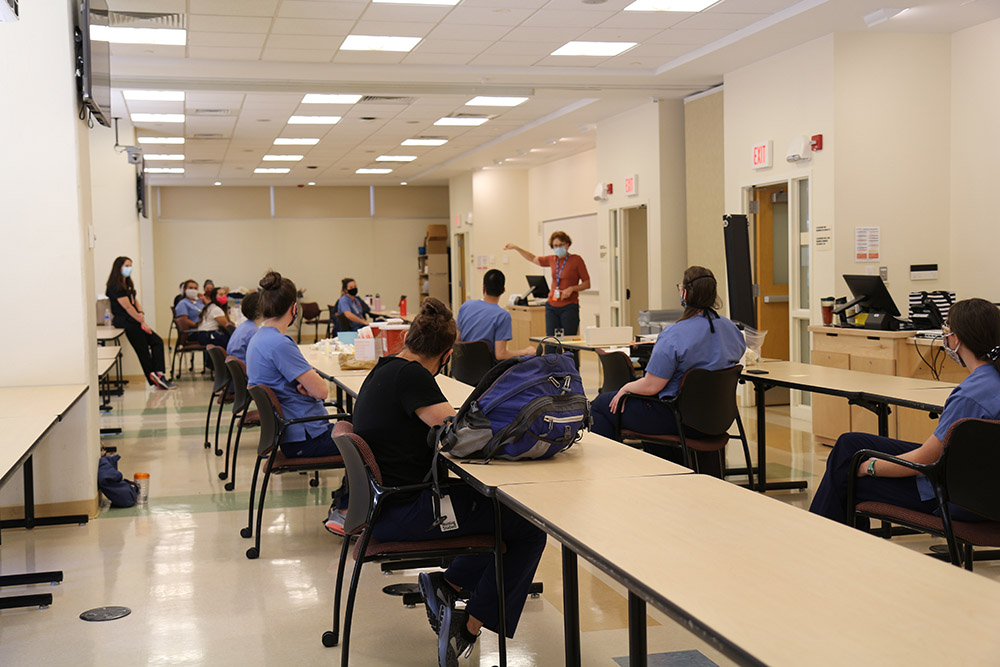
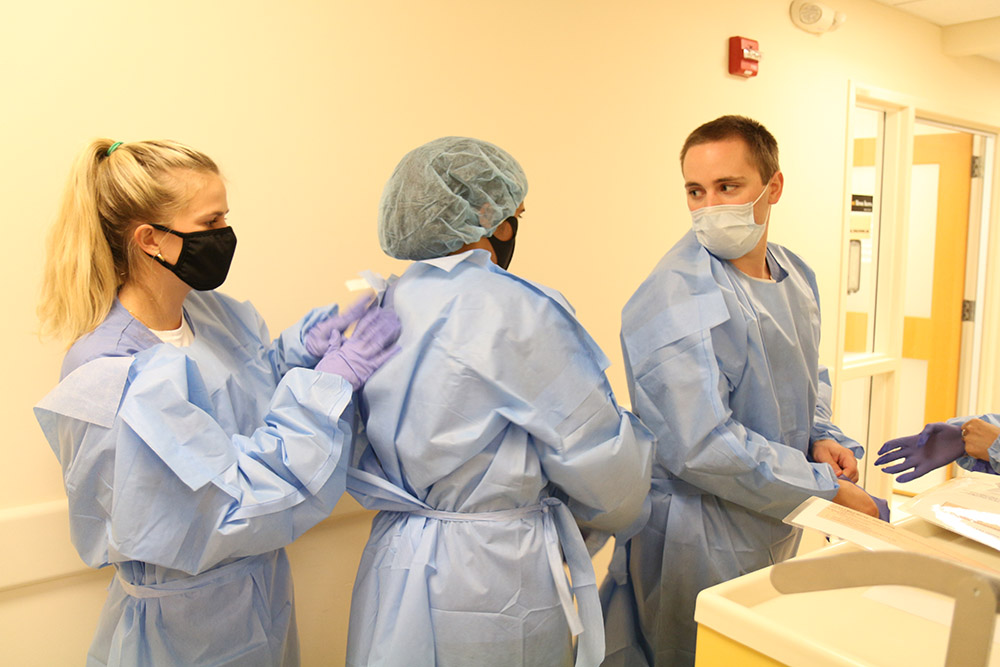
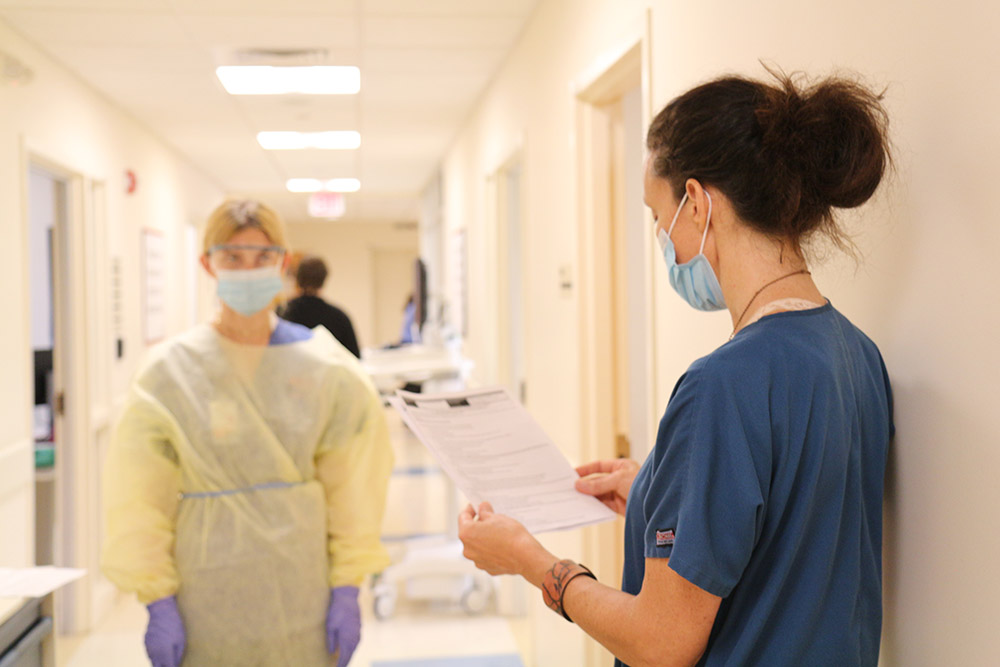
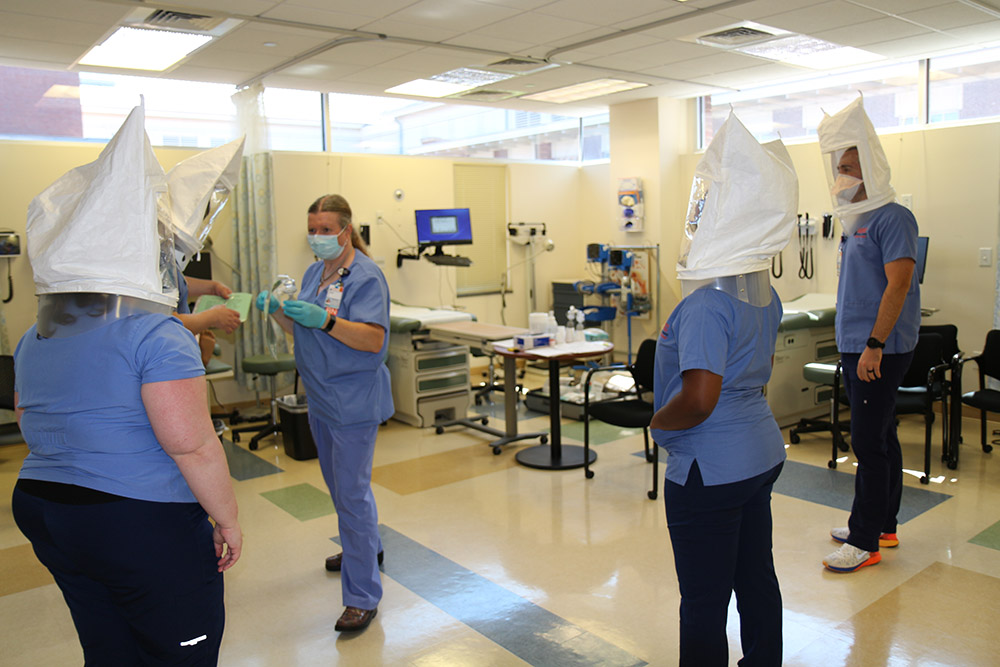
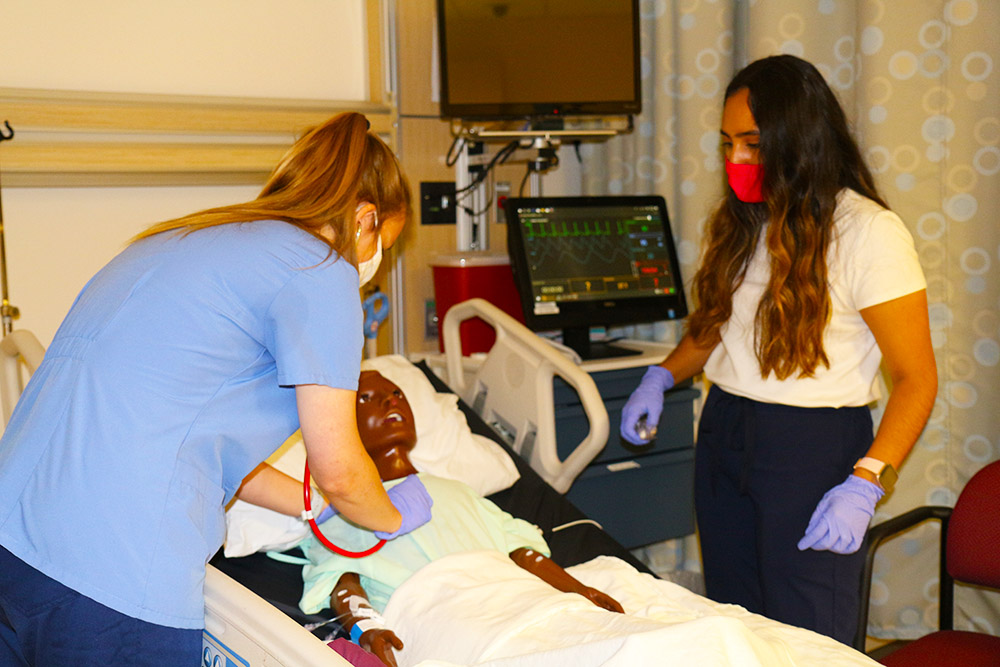
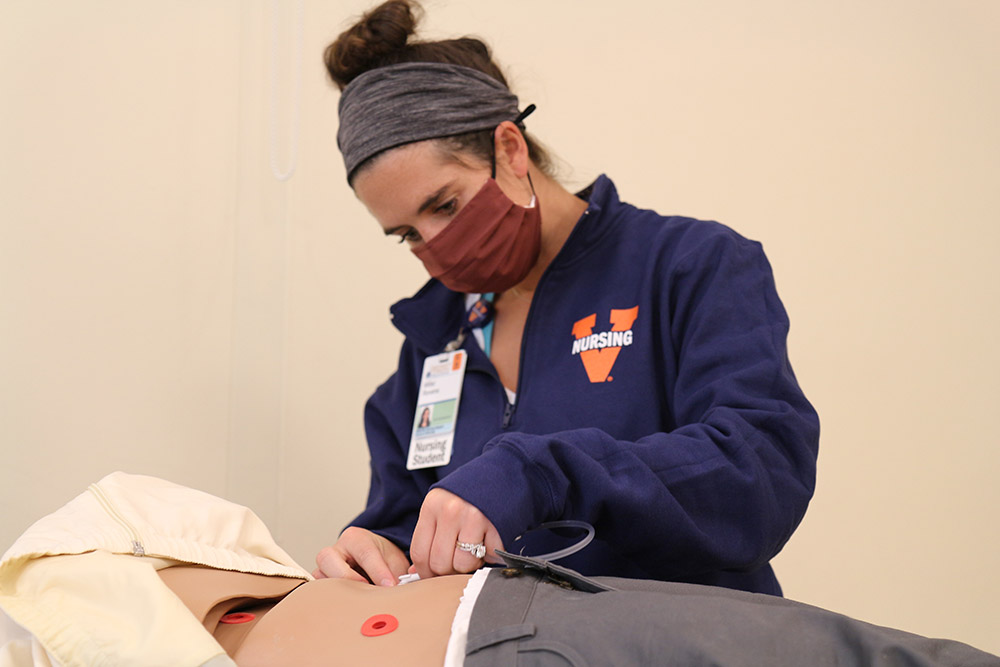
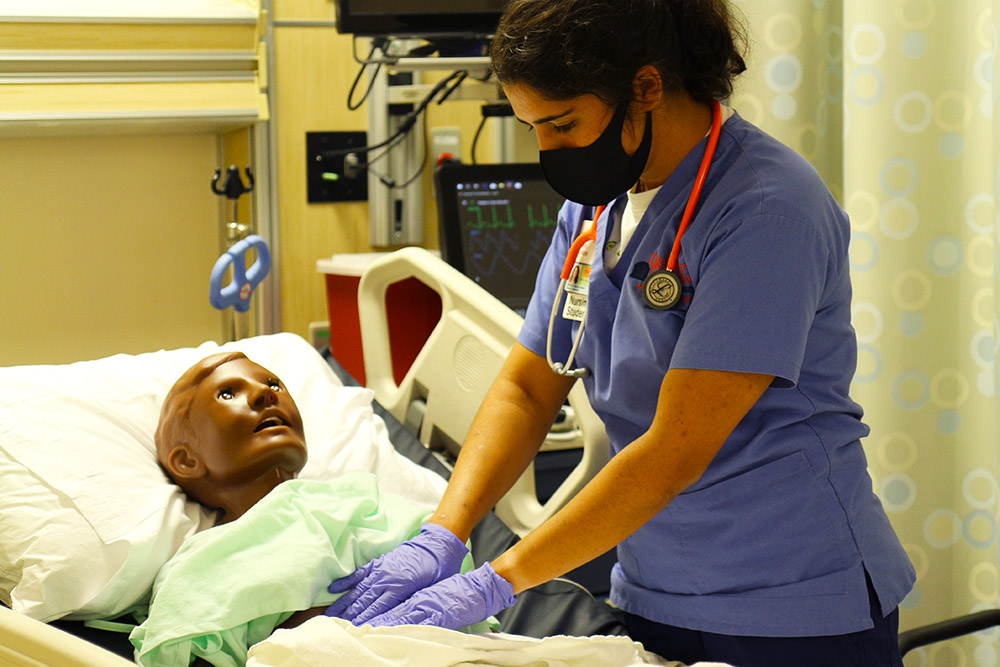
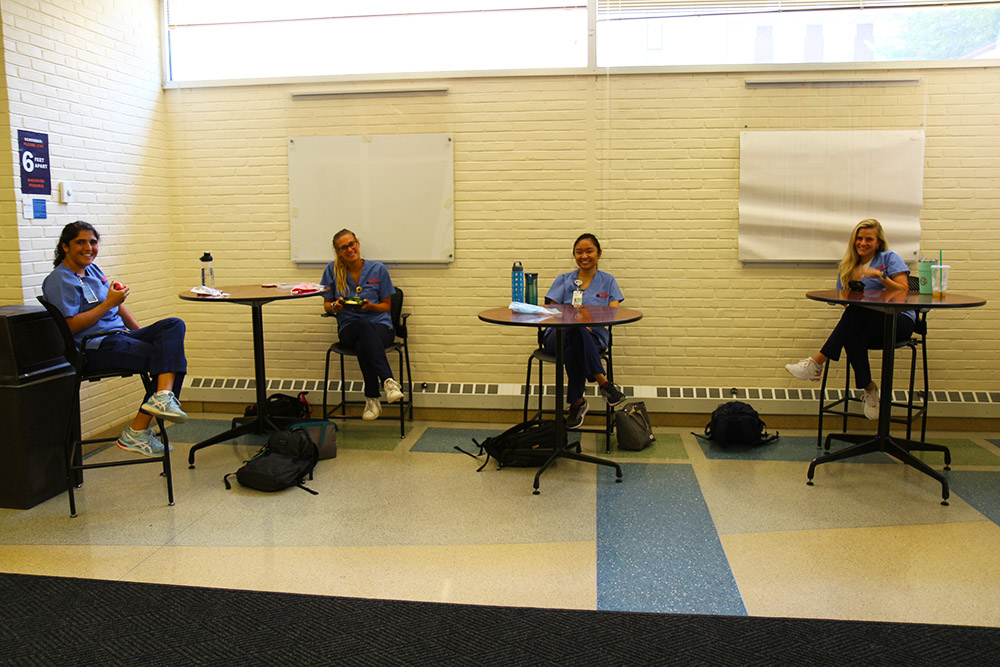
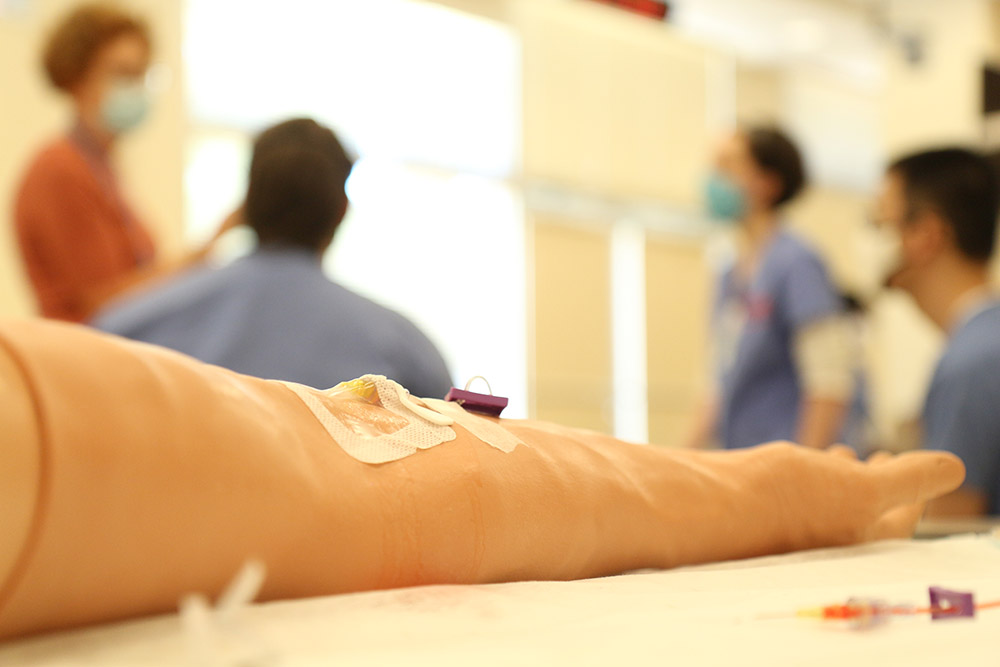
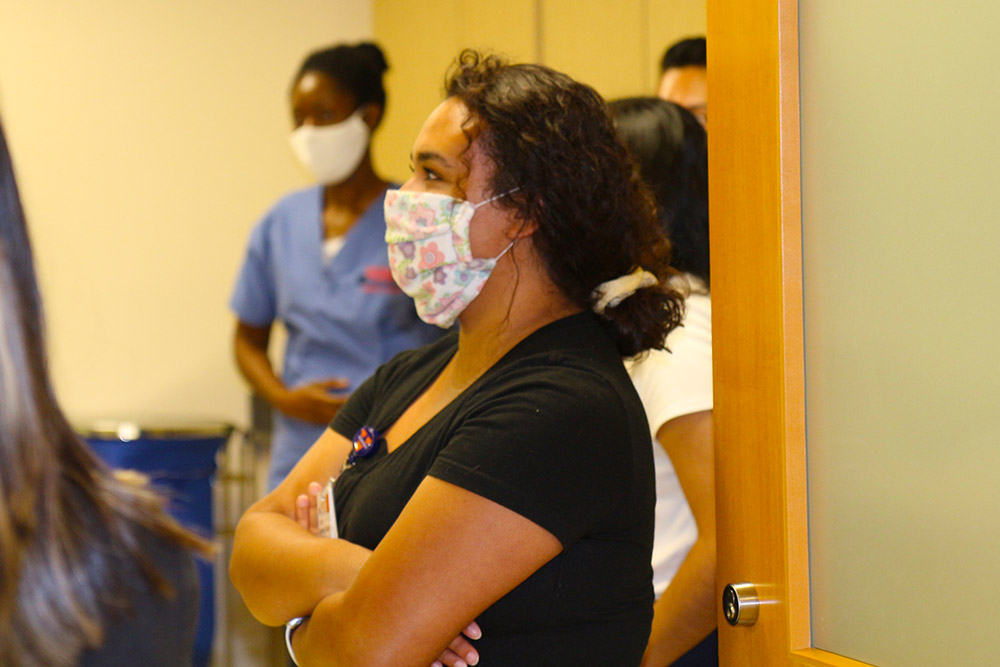
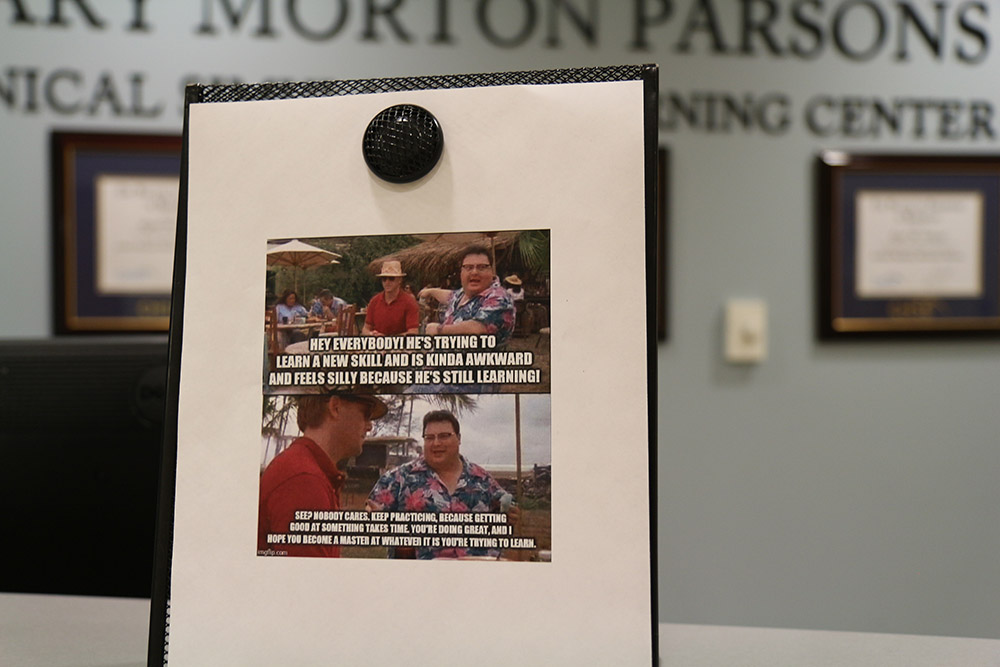
Angie Osorio Limas (CNL `21), a psychology major originally from Bakersfield, CA, who joined the program last year was so excited about returning to class in person she couldn't sleep the night before. And while she's felt "a little scared," she's appreciative of how faculty have "listened to what our concerns are."
"It's scary to think about everything that's changing every day," said Limas, but "we're making sure we're not making mistakes and protecting ourselves. That's the number one thing now, so we can be there for our patients."
Though CNL classes have been meeting virtually, there's a relief in convening in the same space, said Limas, because "nobody gets you quite like your cohort."
Frankie Allen (CNL `21) agreed.
"That's been the hardest part about going remote," said Allen (CNL `21), a biology major originally from Detroit, MI, "not getting that social part. But the program's done a great job of making things safer, setting up social distancing, we're all wearing masks, and they're sanitizing things between simulations and activities, trying to keep everyone as safe as possible."
Nerves or not, being back in the sim lab has, she added, reaffirmed her eagerness to become a nurse, and made her appreciate the transformations taking place.
"It's only been a year," said Allen, "and we're only halfway through the program, but we've all grown. I feel like I'm already understanding how to think like a nurse."
CNLs begin clinical rotations in hospitals and clinics beginning in early August.
###
